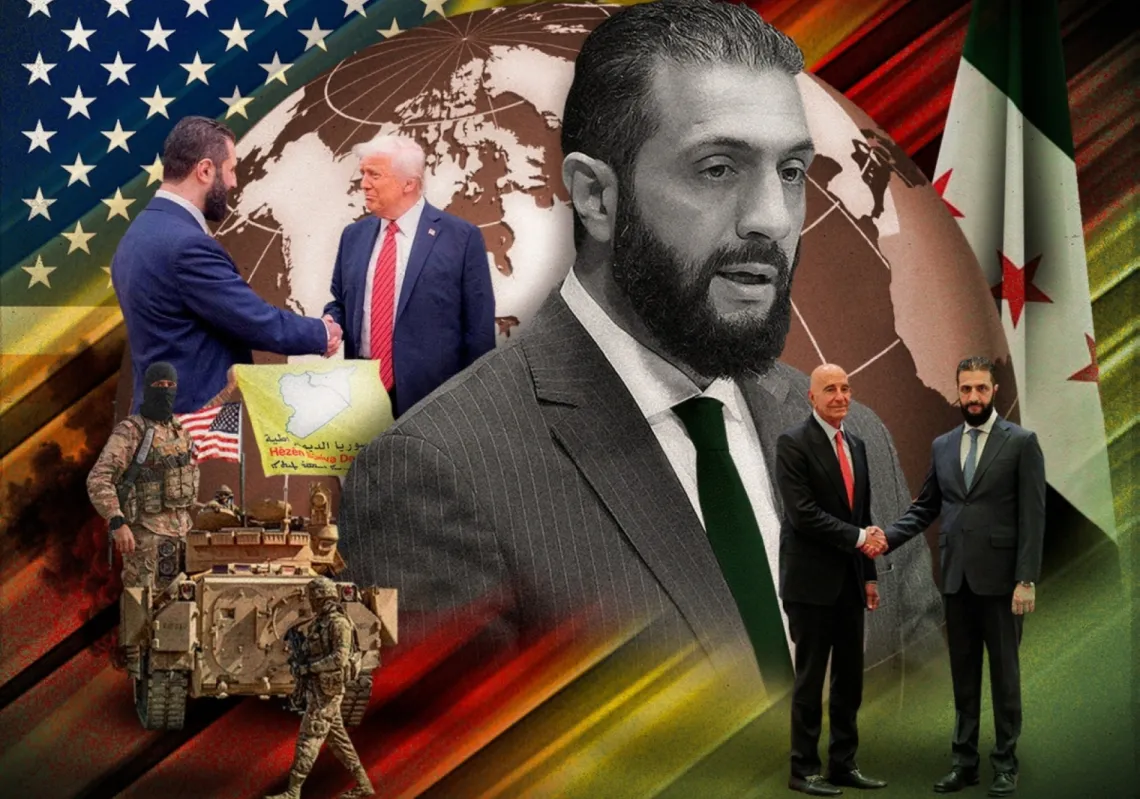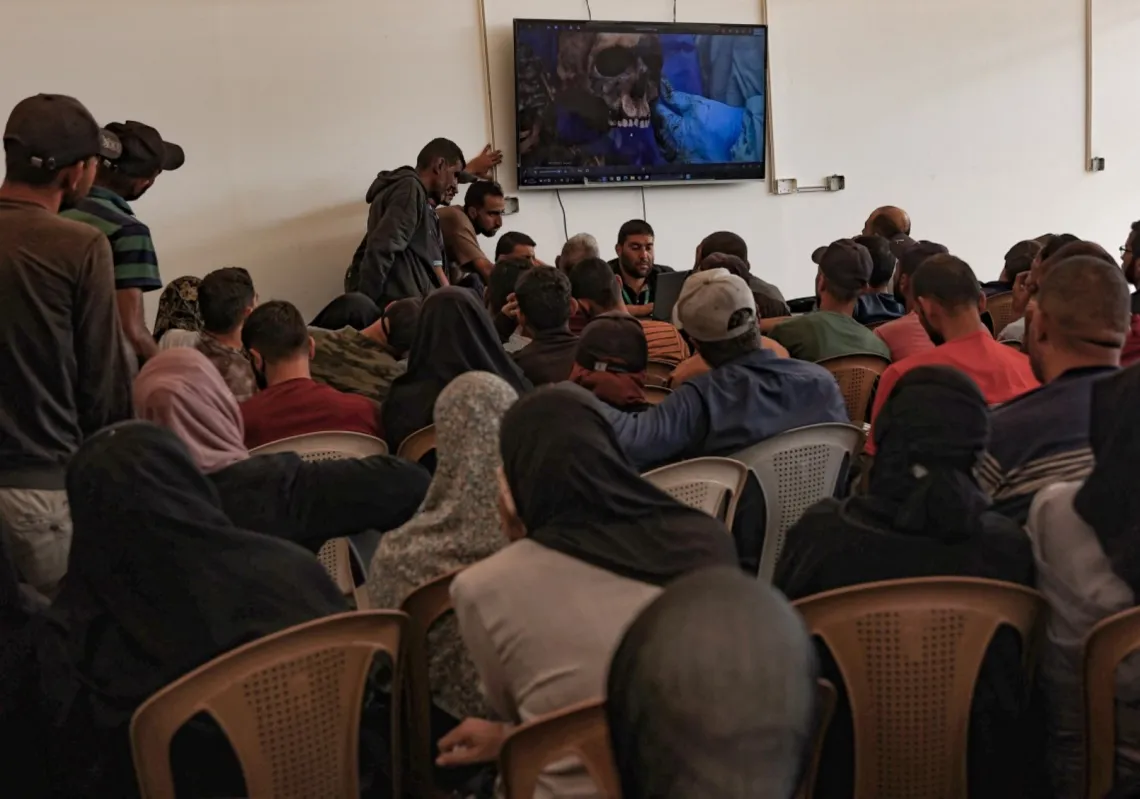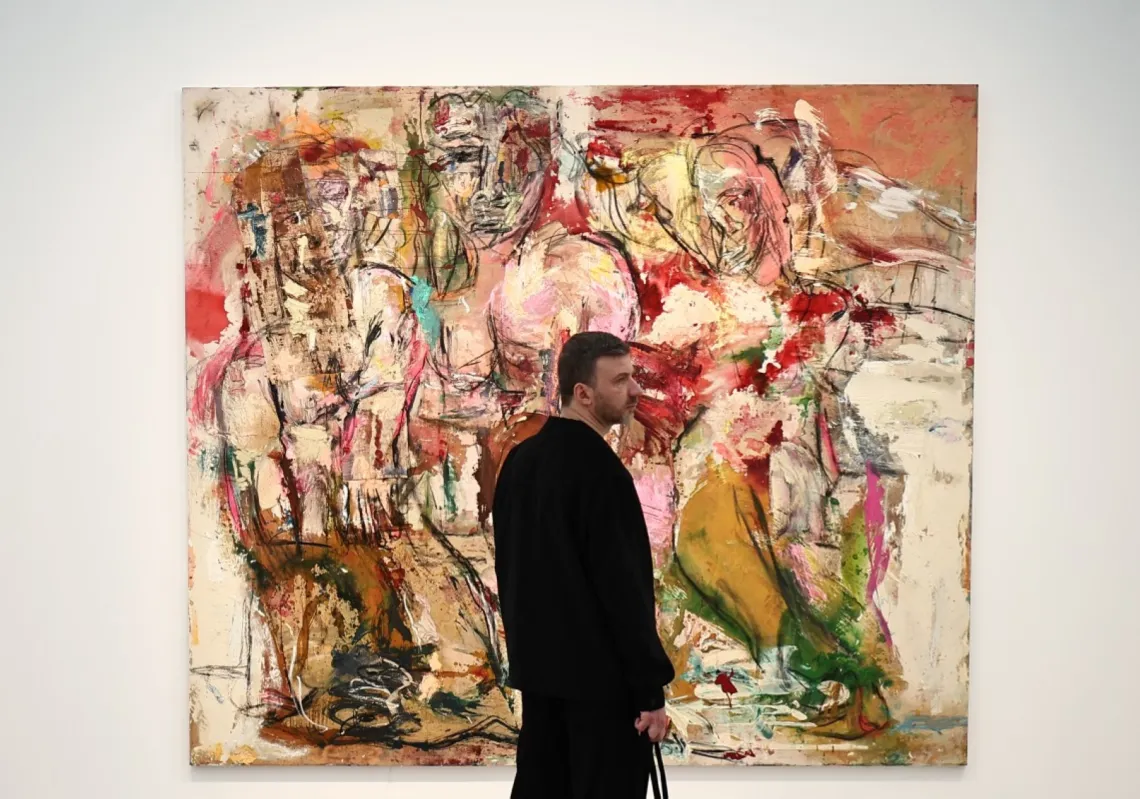by Elizabeth Collett


The New Odyssey: The Story of the Twenty-First-Century Refugee Crisis. Patrick Kingsley. Liveright, 2017. 368pp. Cast Away: True Stories of Survival From Europe’s Refugee Crisis. Charlotte McDonald-Gibson. New Press, 2016. 352pp.
The dramatic surge in the number of refugees and migrants that arrived in Europe over the course of 2015 should not have come as a surprise. For anyone paying attention to the civil war in Syria—as well as to the festering conflicts in Afghanistan, Iraq, Libya, and Yemen—it was clear that the crisis had been a long time coming. Yet the arrival of so many, and in so chaotic and desperate a manner, caught European policymakers off-guard. As more than one million people entered Europe, primarily by crossing the Mediterranean, the fabled solidarity underpinning the European project began to crumble. As some governments scrambled to construct makeshift reception centers in resorts and army barracks, others looked on with indifference, and still more did so with alarm. European politicians turned on one another, blaming those who had failed to manage their borders, those who had supposedly encouraged migrants with their hospitality, and those who had done nothing at all.
Last March, shortly after Croatia, Macedonia, and Slovenia closed their borders, shutting the so-called western Balkan refugee route, the EU struck a deal with Turkey. Ankara would take back migrants who had reached Greece and crack down on the migrant-smuggling industry that had taken root along the Aegean coast. In return, the EU would pay Turkey six billion euros to host the millions of refugees already displaced in the country and accelerate talks on visa-free travel for Turkish nationals to the EU and, in the longer term, on EU accession for Turkey.
The only credible justification for the deal was that it was necessary to give the EU time to develop a sustainable internal response. Yet as the urgency of the crisis has ebbed, European officials have squandered the breathing room the deal gave them and reverted to the same policies they pursued before the crisis, including yet another attempt to reform the dysfunctional Dublin Regulation, which states that the EU country in which asylum seekers first arrive must weigh their claims and then either host or return them.
Despite all the frenzied activity by policymakers, thousands of migrants still try to cross the central Mediterranean each month, even during the winter; the EU is back where it was two years ago. Those displaced from the broken states of the Middle East and South Asia see few long-term alternatives but to attempt to reach Europe through whatever openings they can find in the continent’s southeast. Meanwhile, the plight of migrants in Greece and Italy remains dire, with thousands crammed into overcrowded reception centers. If the deal with Turkey collapses, as many observers predict it will, Greece will be stretched beyond its still limited capacity to manage arrivals.
In some ways, it is not surprising that the EU’s institutions have failed to rise to the challenge. On every issue, the union must reach consensus among more than two dozen states with divergent priorities and differing domestic political constraints. And EU politicians often seem more intent on settling scores between their respective countries than on crafting effective policy.
Meanwhile, policymakers can often forget the plight of the individual men, women, and children who have migrated. Two new books, both by journalists, attempt to redress this. The New Odyssey, by Patrick Kingsley, and Cast Away, by Charlotte McDonald-Gibson, chronicle the uncertainties and fears of the courageous, desperate, and sometimes foolhardy voyagers. They offer an important rejoinder to the idea, widespread across Europe, that such journeys are acts of pure opportunism. For many migrants, the decision to leave home, in the words of the Nigerian academic Aderanti Adepoju, exchanges “misery without hope for misery with hope.”
PEOPLE ON THE MOVE
To write The New Odyssey, Kingsley interviewed people in 17 countries, stringing together vivid snapshots of migrants, people smugglers, advocates, and, occasionally, policymakers. He returns throughout the book to the story of Hashem, a refugee who travels from Syria to Egypt, Italy, and, eventually, Sweden. As The Guardian’s first “migration correspondent,” Kingsley has witnessed hundreds of migrants’ journeys over the past few years and has delved into the complex machinery of smuggling that facilitates them.
The book brings home some of the mundanity of these lengthy voyages, but also the ingenuity of the travelers. In the western Balkans, Kingsley describes groups of young men sharing cigarettes and cracking jokes as they pick their way across the muddy terrain. Hashem, meanwhile, travels by train across northern Europe, hiding behind newspapers written in languages that he cannot read to escape the scrutiny of train guards.
Like Kingsley, McDonald-Gibson focuses on harrowing individual stories, but she does so in greater depth, following just five migrants on their journeys to Europe. One of them, Sina, is a pregnant Eritrean woman desperate to find a better future for her unborn child. A 24-year-old middle-class chemical engineer, she stands in sharp contrast to the media’s caricatures of the migrants as impoverished and uneducated.
McDonald-Gibson’s book thoroughly examines the forces that impel her characters to move and the personal conflicts they face as they make their decisions. An experienced foreign correspondent, McDonald-Gibson displays a strong grasp of regional geopolitics and the European policies and politics in which her protagonists are entangled. Her detailed narrative of the oppressive circumstances in Eritrea, for example, where the government forces people into indefinite military service, sheds light on a country that has become the single largest source of migrants from Africa but that Western media tend to overlook. Although the overall recognition rate of asylum claims from Eritrean nationals reaches around 90 percent in Europe, she notes that countries such as Denmark and the United Kingdom have started to dispute these asylum seekers’ accounts of the conditions they face at home, and the United Kingdom now recognizes far fewer Eritreans as refugees. Meanwhile, in Italy, the conditions that greet asylum seekers are so poor that Eritreans try to avoid making their claims there. Governments have understood that generosity has a cost; indirect policies of deterrence are increasingly prevalent.
BALANCING ACT
In their attention to individual stories, these books indirectly illuminate why policymakers have struggled to resolve the crisis. To function effectively, immigration systems must create policies that are broadly applicable to all arrivals. But for the individual migrants themselves, with their widely varying experiences, blanket EU policies can seem arbitrary and authoritarian, especially when their fates often depend on the whims of particular officials. Balancing humanitarian responsibilities with the need to manage migration, while heeding the desires and fears of European publics, has become a defining challenge for the EU’s liberal democracies.
Given these difficulties, people across the political spectrum have tended to oversimplify the apparent policy choices, boiling them down to an all-or-nothing decision: borders should be open or closed. At times, both authors, and particularly Kingsley, fall prey to this kind of thinking. In his policy prescriptions, for instance, Kingsley neglects to contend with some of the complex trade-offs that have made the crisis so difficult for officials to solve. He points out, correctly, that when countries close their borders, they often simply divert the flow of refugees rather than reduce the overall numbers—an example of the beggar-thy-neighbor policies that have defined much of the European reaction to the crisis over the past year. But like many who advocate a more welcoming approach, he also fails to engage deeply with some of the challenges posed by more porous borders.
Kingsley’s primary policy prescription is that the EU can solve the crisis only by establishing legal means for would-be refugees and migrants to reach Europe, such as an organized system of mass resettlement. “Why make us do all this trip?” a Syrian refugee asks Kingsley near the border between Croatia and Slovenia. “Just organize it, give people visas so they can come on the plane. If you don’t, people will keep coming.”
Kingsley is right that industrialized states should take in more people from countries overwhelmed by refugees, such as Kenya, Lebanon, and Turkey. But there’s little evidence that such moves will deter irregular migration, especially in the short term. Kingsley ignores critical questions, such as how policymakers should choose whom to resettle, and he fails to grapple seriously with why Europe has not adopted such a policy already, preferring to blame Europe’s inaction on the immorality of its leaders. And both Kingsley and McDonald-Gibson make only passing reference to security concerns and the awkward reality that terrorists have exploited unmanaged migration flows: two of the nine assailants involved in the Paris attacks in November 2015 probably arrived in Europe by boat. Such attacks do not justify governments’ decisions to build walls or refuse asylum, but it is naive to not acknowledge the risks that come with allowing unidentified people to cross borders at will.
EUROPEAN DILEMMAS
The year ahead will be a difficult one for the EU. The deal with Turkey remains fragile, refugees and migrants remain in limbo on both sides of Europe’s borders (recent estimates suggest there could be as many as 300,000 would-be migrants in Libya, for example), and voters are flocking to populist parties, driven in part by concerns over immigration. European policymakers will have to engage with some fundamental questions that they have so far avoided answering. Will the EU remain committed to its founding liberal principles? Can the EU preserve freedom of movement without reaching common ground on asylum policies? And what is the future of the global system of international protection for refugees, as some of the strongest champions of the current approach start looking seriously for alternatives?
In 2017, the EU will have to decide whether, and how, it will continue to protect refugees. The question has become unavoidable for two reasons. First, several newer EU member states, notably the Visegrad Four—the Czech Republic, Hungary, Poland, and Slovakia—have effectively repudiated their commitment to the 1951 UN Refugee Convention. In a policy known as “effective solidarity,” they have insisted that hosting refugees is for other countries and not for them—even though they accepted the responsibility to do so under the Common European Asylum System when they joined the union in 2004. McDonald-Gibson points out the irony of central and eastern Europeans vilifying asylum seekers even as their own countries’ emigrant citizens are denigrated across western Europe, where millions of Czechs, Poles, Slovaks, and others have gone to work in the past decade.
But if EU countries fail to manage their asylum policies together, they will undermine the so-called Schengen system, which allows EU citizens to travel within the Schengen zone without passports. (Indeed, the relationship between asylum rules and the freedom of movement seemed so obvious to veteran EU officials that they thought it was unnecessary to formally clarify the link in the treaties that the Visegrad countries signed when they joined the union—an oversight they have come to regret.) If member states cannot trust one another to assume similar responsibilities with respect to border management, asylum, immigration, and security, they will be more likely to prioritize narrow national interests, as they did when they reinstated temporary border controls across the EU in 2015.
Second, those member states that ostensibly remain committed to protecting refugees, such as Austria, Germany, Italy, and even Malta, have begun to argue that the current system, in which asylum seekers must set foot in an EU country in order to claim protection, fuels the lucrative smuggling industry and discriminates against those who are too poor or weak to reach the continent. They have proposed “external processing”: corralling people in neighboring countries and offering resettlement to those deemed worthy, thereby providing refugees with safer, legal routes to Europe. This approach has gained traction since the EU-Turkey deal, and policymakers are scanning North Africa for other partners with whom they can strike similar agreements, such as Egypt, Tunisia, and even Libya.
Although human rights groups have long advocated that the EU should expand legal pathways to Europe, they vehemently oppose external processing, arguing that to turn individuals away from Europe is both an abnegation of the right to claim asylum and a violation of human rights. In the model of external processing that European countries are currently discussing, non-EU partners would need to play a strong role in “pulling back” boats to their territory, hosting camps, and managing returns of migrants, a role that may prove beyond their existing capacity. Various governments, including Berlin and London, had made similar proposals over the past 15 years, but until now, such measures were always regarded as a step too far. Today, however, leaders believe that their political futures hinge on stemming migrant flows across the Mediterranean, no matter the diplomatic or financial cost.
If European countries turn to external processing, it may prove a watershed moment for the global refugee protection system. If Europe decides to focus on the resettlement of refugees as part of an external-processing model, rather than automatically assessing the claims of those who manage to cross its external borders, the system will risk becoming even more vulnerable to political pressure: a government could terminate a program at any moment. In the United States, for example, following the Paris attacks in November 2015, the governors of 31 states vowed to refuse any refugees, citing security concerns.
And external processing may not prove to be the panacea that Europe’s leaders hope: the EU-Turkey deal—the template on which governments wish to base any future plans of this sort—suggests that the EU would struggle to manage such a system while maintaining the principles of international protection. It has little experience working on the frontlines of immigration and asylum policy and tends to view effective planning as a mere political afterthought. The experience of Greece, which has become something of a laboratory for external processing, has demonstrated that without the capacity or infrastructure necessary to manage thousands of people, the conditions can rapidly become inhumane. Even the Australian government, whose model several European governments have hailed, has yet to address the degrading conditions in its external-processing centers in Manus and Nauru, despite huge investments.
Any system for external processing would also depend on the willingness of EU member states to take in those refugees whom the union invited in to be resettled. The EU would need to find a way to compel European governments to maintain their commitments beyond a single political cycle; the reluctance of states such as Hungary to even contemplate hosting refugees suggests this would prove difficult.
But perhaps the biggest problem with external processing is that by striking expensive political deals with its neighbors, the EU would risk making itself beholden to states whose leaders may exploit their advantage. European governments would need to announce clear redlines in advance regarding whom they will deal with, and on what basis, and preserve the ability to walk away.
External processing should not be condemned out of hand; the status quo—sea journeys that imperil thousands every day—is untenable, and the Common European Asylum System needs drastic reform. But the EU should not undertake the policy lightly: it must remember that any fundamental overhaul of asylum policy will require detailed planning, a long-term commitment to resettlement, and a recognition that such a policy will yield broader geopolitical consequences. And Europe’s leaders must not forget the principles of human rights that have underpinned their countries’ asylum policies for decades—and that lie at the core of the European project itself.
This article was originally published in Foreign Affairs









